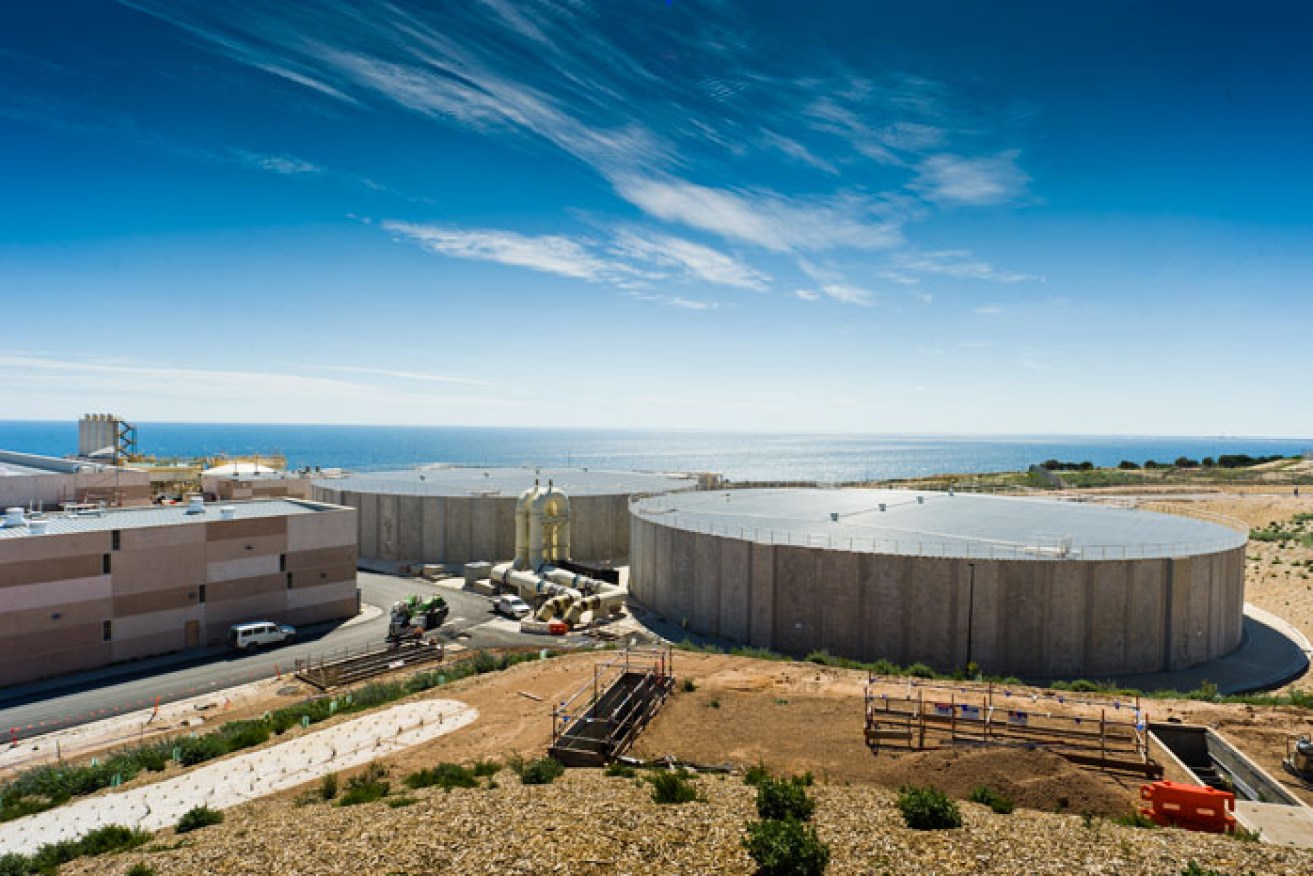How SA’s power plan could resurrect the desal plant
South Australia needs new thinking to make the most of its assets, writes developer Jamie McClurg.


Adelaide's mothballed desalination plant.
In business, there is little worse than a non-performing asset. They consume time, resources and money while hanging on the balance sheet like an anchor.
And, in the biggest business of all in SA – the business of government – non-performing assets are a massive burden on the budget and the taxpayer.
But history shows they can be turned around.
The State Government’s $535 million investment in Adelaide Oval transformed it from an underutilised cricket ground that hosted just a handful of events each year into a multi-purpose, award-winning icon and a year-round contributor to the city’s economy, vibrancy and psyche.
It has become a case study in how to generate an outstanding return, not only in economic terms, but also in its social impact.
Similarly, the change in attitude toward the city’s laneways has added another layer of energy and discovery to Adelaide’s tourism story while the Riverbank redevelopment is continuing to turn the city’s focus to the hitherto ignored Torrens.
Now, the same should happen with our much-maligned desal plant.
Conceived as a long-sighted insurance policy with the ability to provide up to 50 per cent of Adelaide’s water needs, its completion was timed almost perfectly with a sudden surfeit of cheaper water in the Mount Lofty catchment areas and the River Murray.
After the investment of $1.8 billion of taxpayers’ money, drought was replaced with deluge and the plant was ‘mothballed’.
However, with the Government’s recent announcement that it wants a 100MW battery built to store renewable energy – again, an insurance policy designed to secure another of the elements essential to life in South Australia – we potentially have the ability to use one to power the other.
As well as providing stability to the power network, the state-owned battery system will allow excess energy from renewables to be purchased during times of low consumer demand (e.g. night time), at a fraction of the usual market rate.
Exciting breakthroughs in technology are continually providing options for new thinking, advanced problem-solving and clever design.
The geographic location of these key state assets is an important consideration, and must be the subject of appropriate analysis. The construction of the desal plant included a significant upgrade to the electricity network to provide large quantities of renewable energy to the site. Perhaps there is an argument to co-locate some or all of the state’s battery storage facility there.
According to published CSIRO figures, River Murray water costs 44 cents per kilolitre to pump and treat, stormwater could be harvested for $1.47 per kilolitre while desalinated water costs $2.41 per kilolitre. The desal plant uses 3.47 to 3.70 kilowatt-hours of electricity per kilolitre of water produced and, although it sources all its power from renewable energy sources, electricity is still a major part of the plant’s $130 million annual operating costs when at full production.
If excess power from the state’s new battery could be directed to the desal to lower its operating costs – and, therefore, the cost of the water it produces – an underperforming asset could become an important contributor to the state, both by generating a return on an investment while also lowering our reliance on the Murray. Another way to think about it also could be to consider the ability to still use the Murray water, but for a grand scale irrigation scheme in the north of our state to create jobs and significant productive benefits in regional South Australia.
If this isn’t feasible, we should be looking at every other possibility to maximise the return on these infrastructure investments. We are doing this with our plan for the redevelopment of the Old Royal Adelaide site, where our proposal includes large-scale energy reuse and repurposing. Exciting breakthroughs in technology are continually providing options for new thinking, advanced problem-solving and clever design.
We have the smarts to do it; we just need to think differently to make it happen.
Because as a city and a state, we should never be afraid to start a conversation about ideas.
Jamie McClurg is CEO of Adelaide-based property development company Commercial & General.




